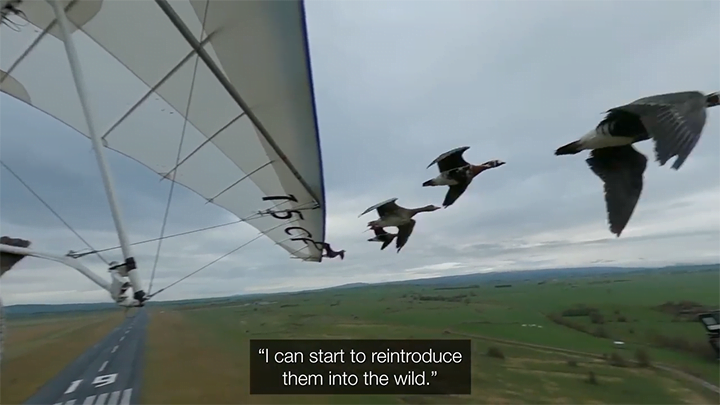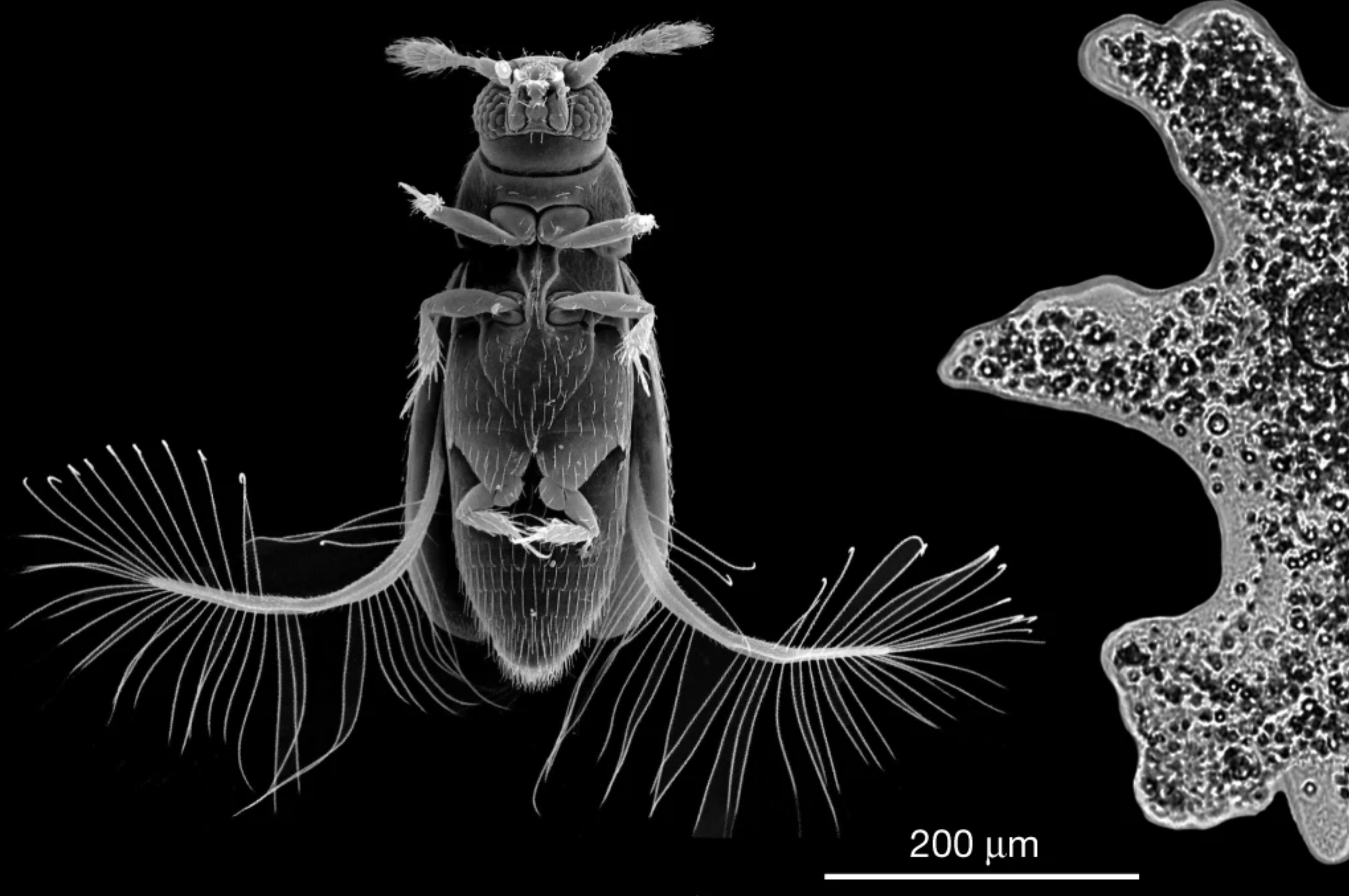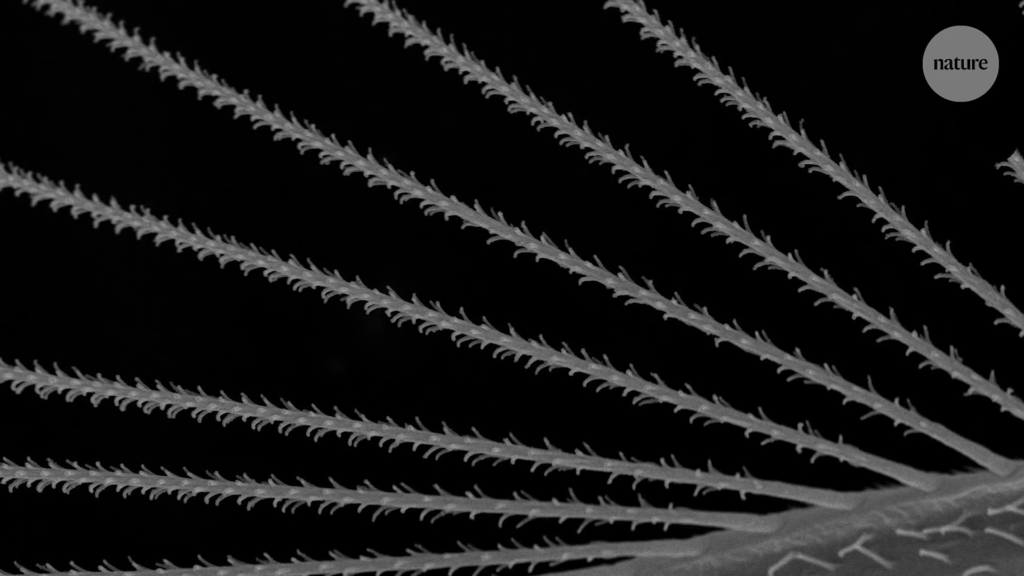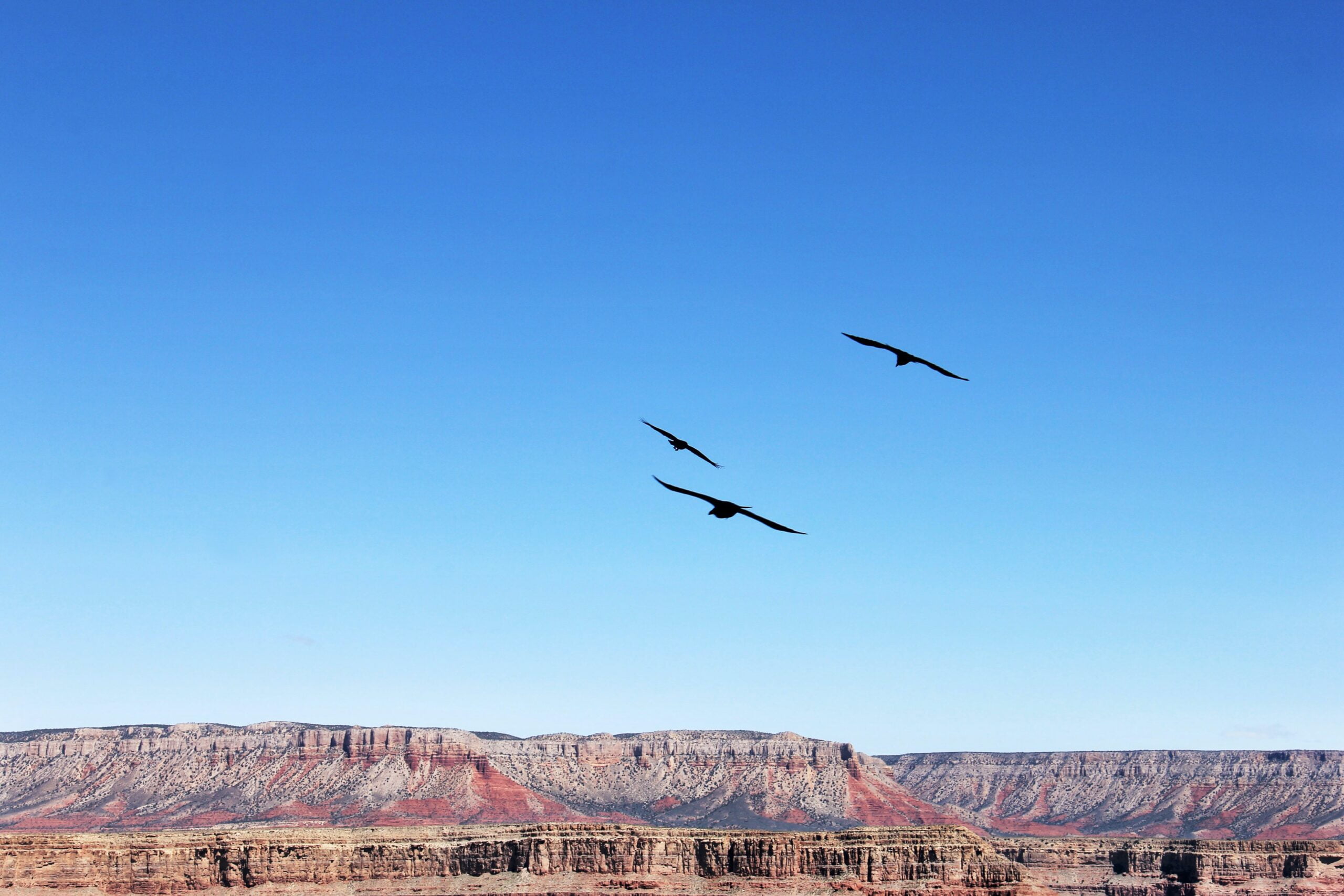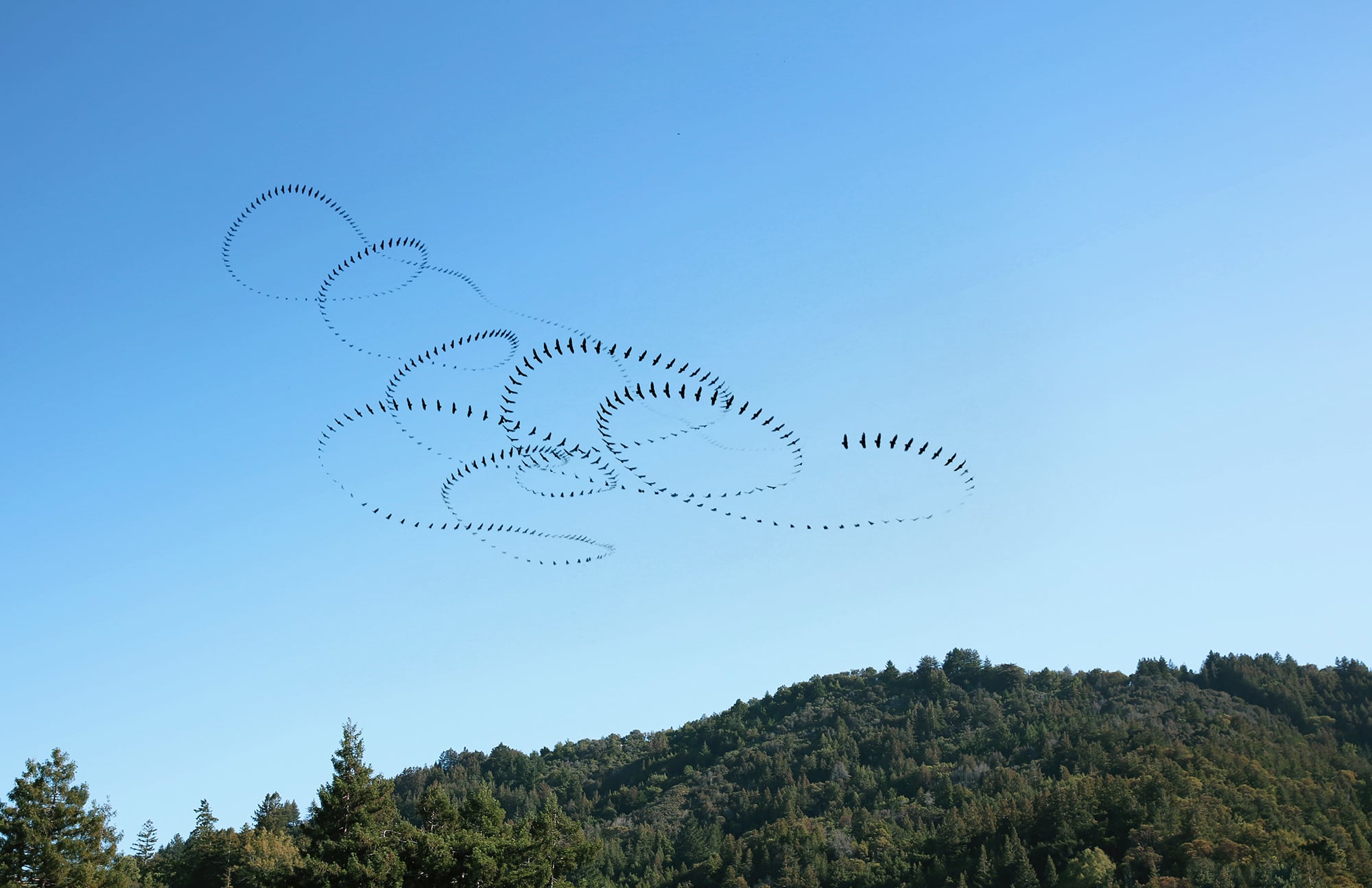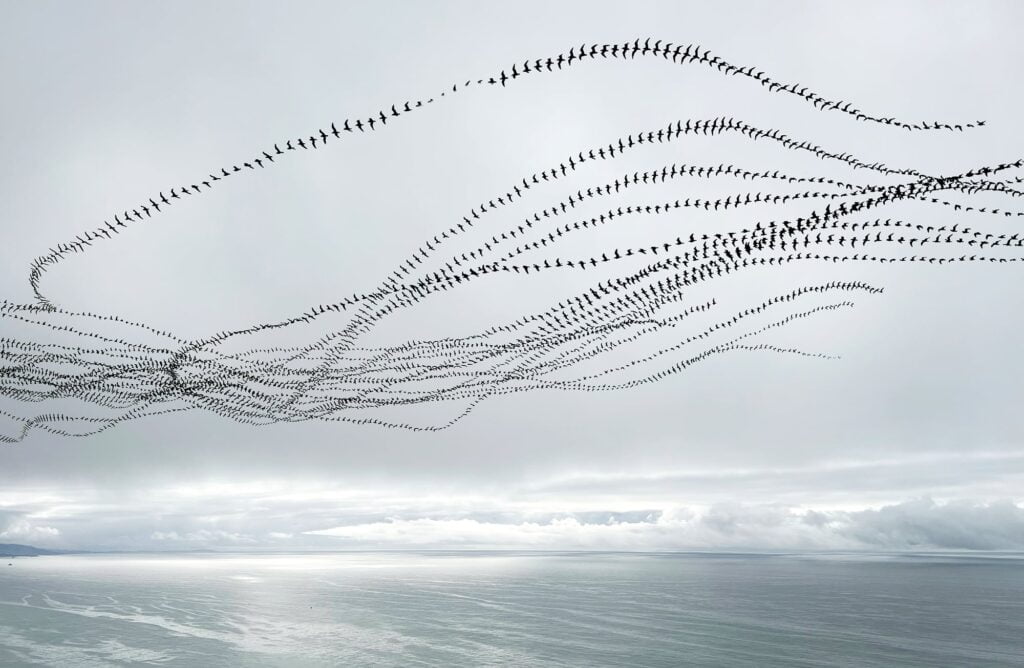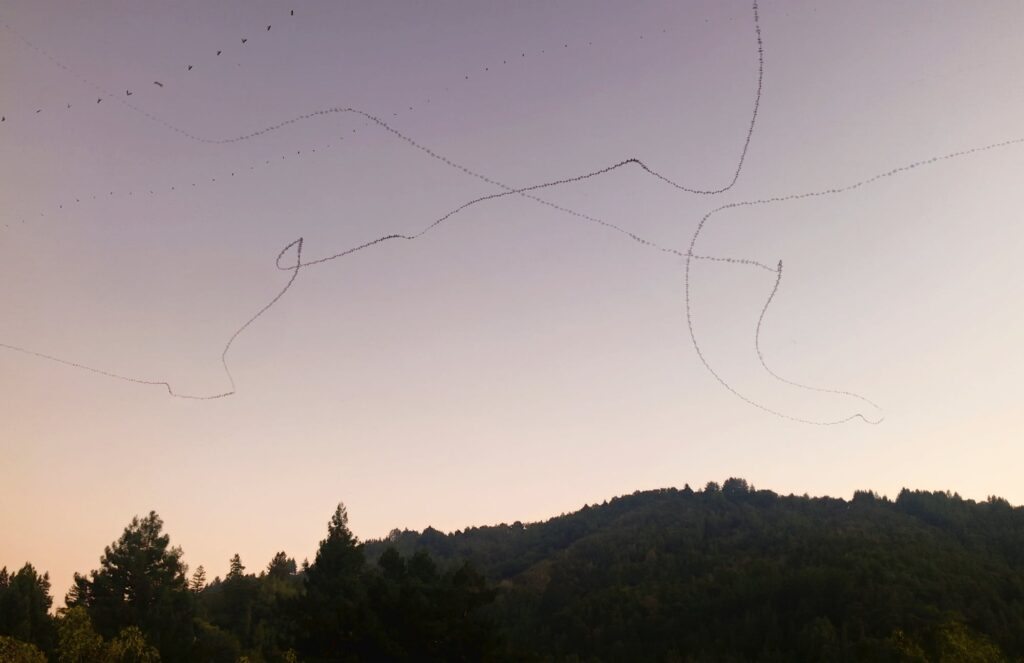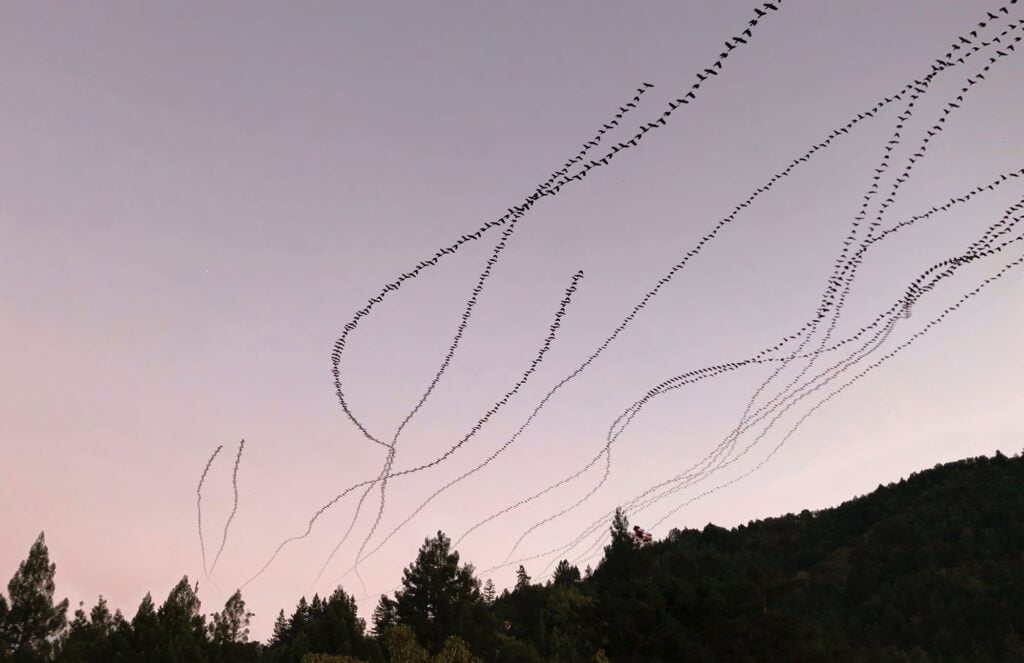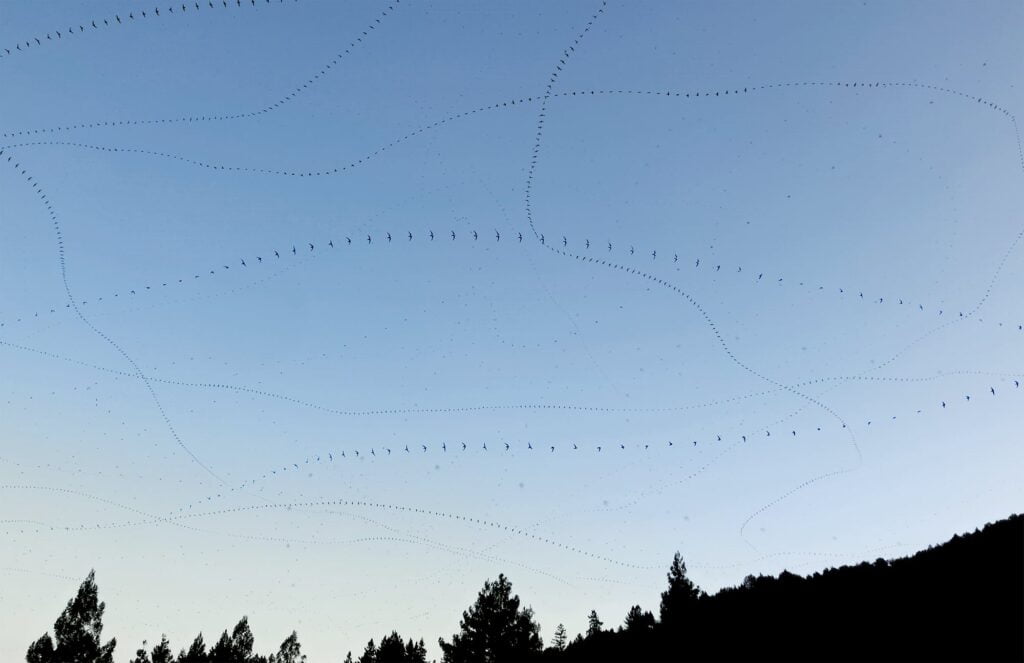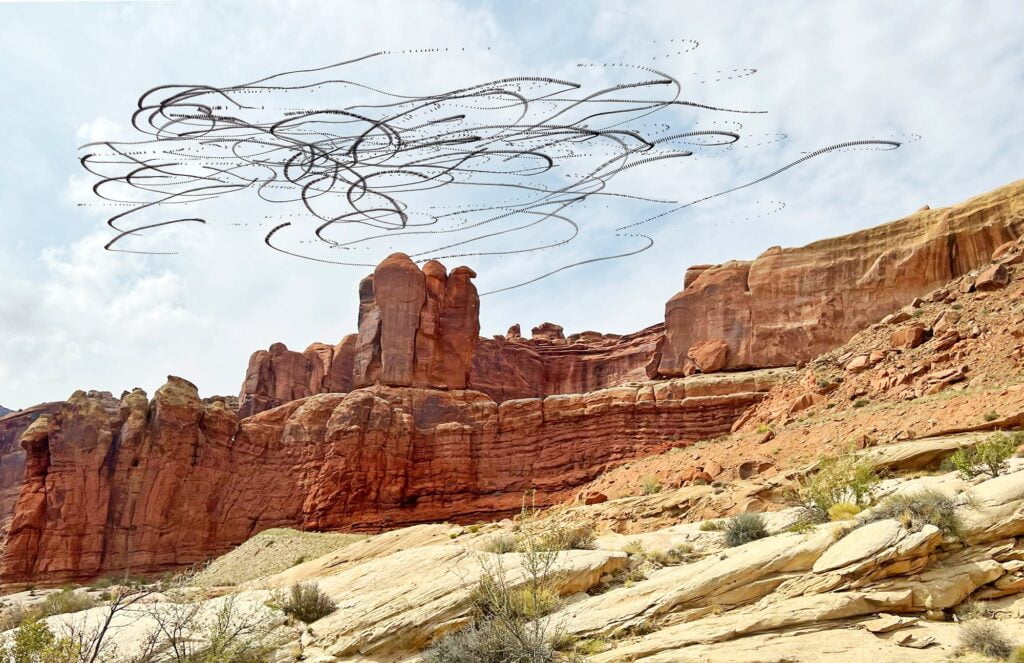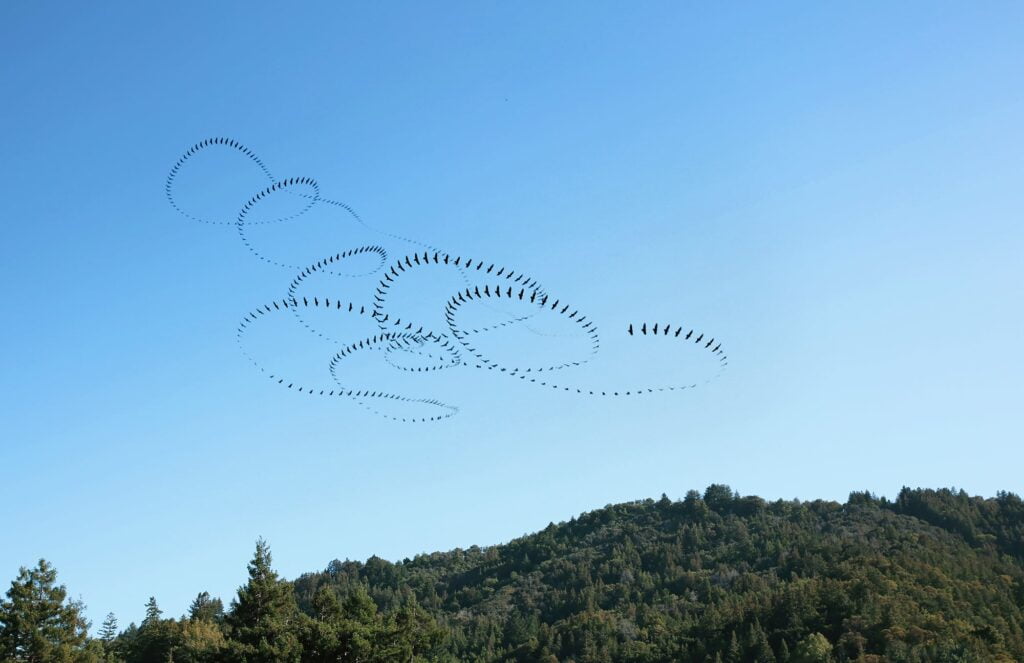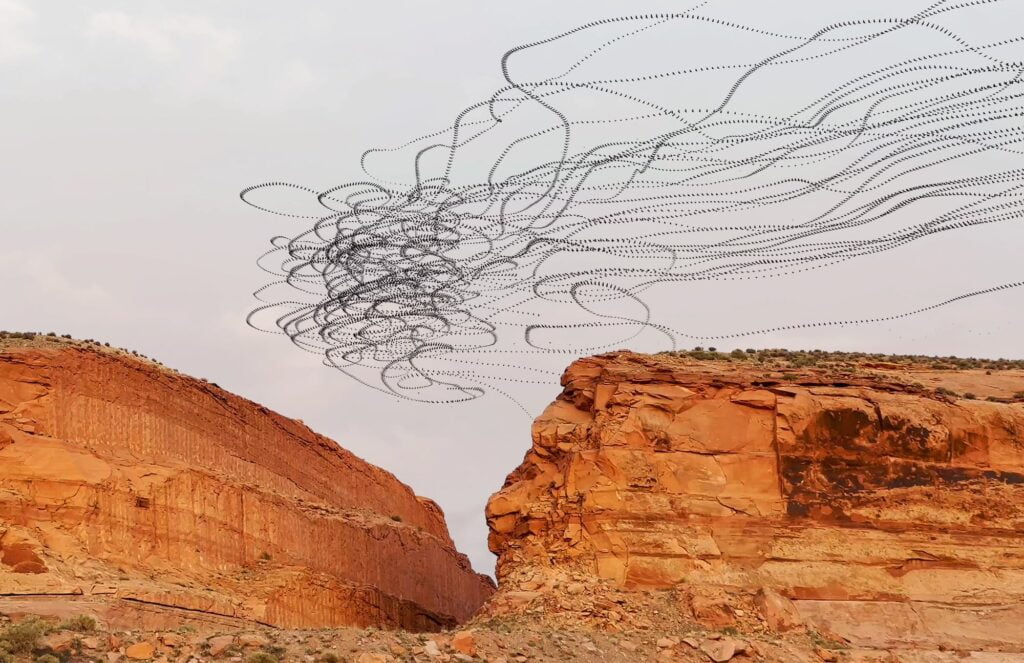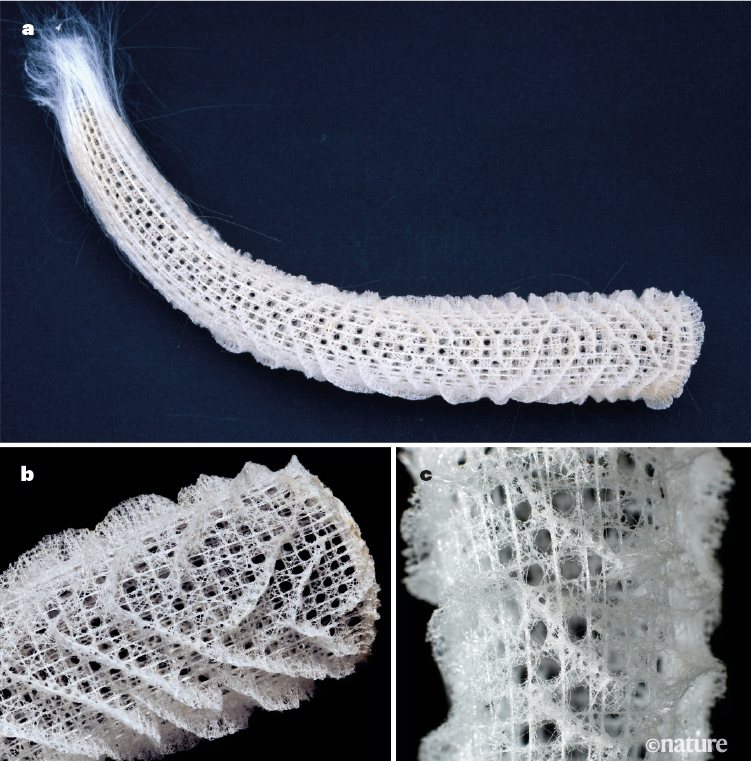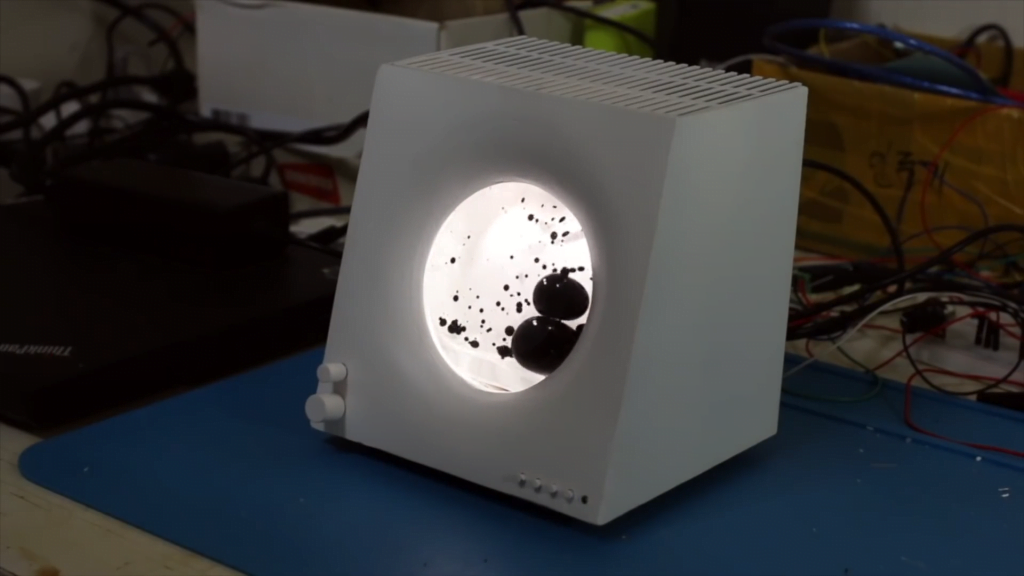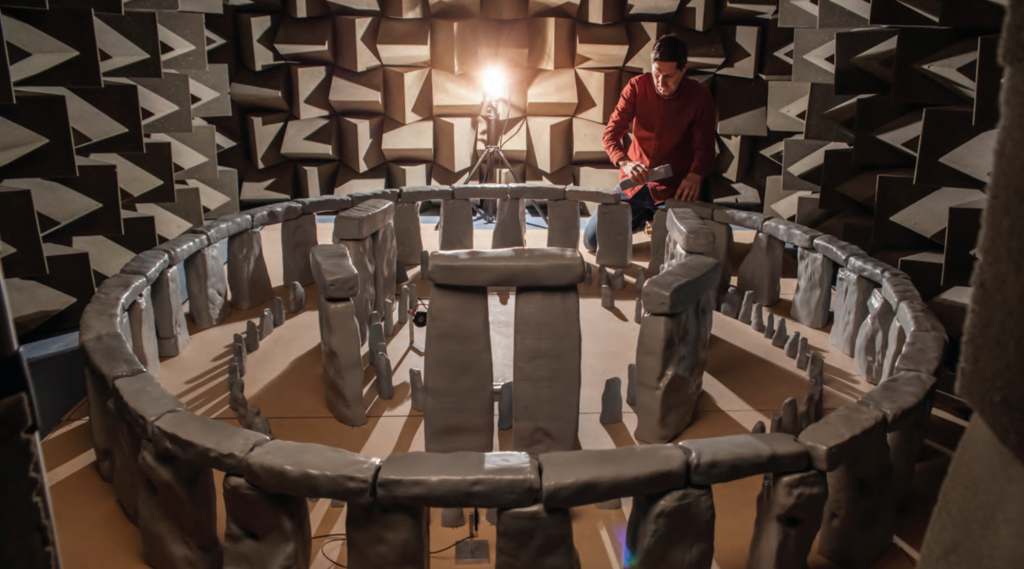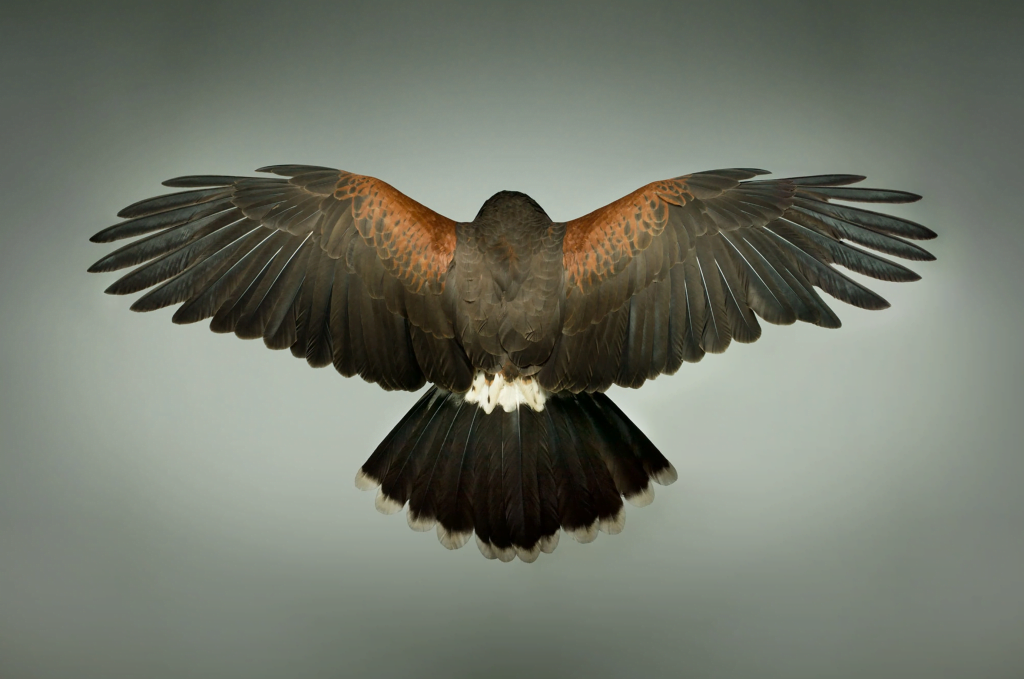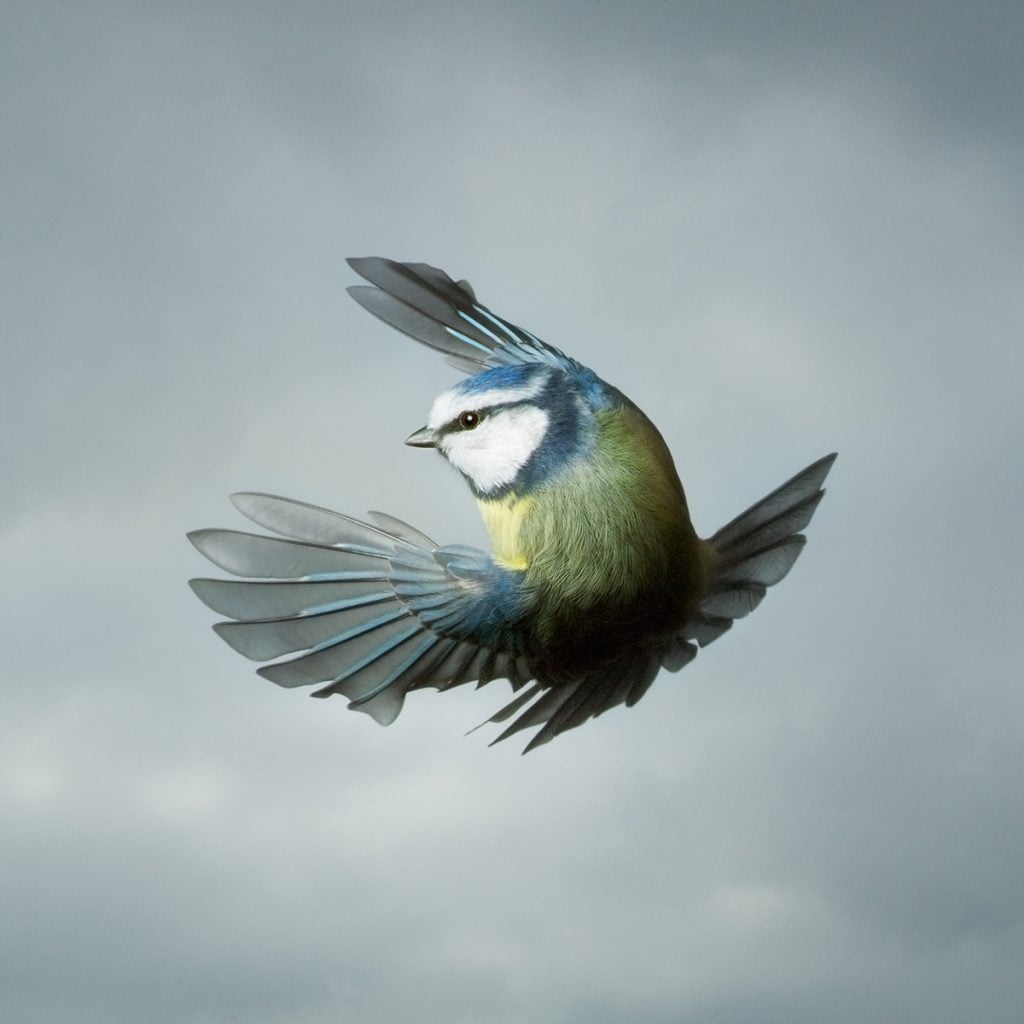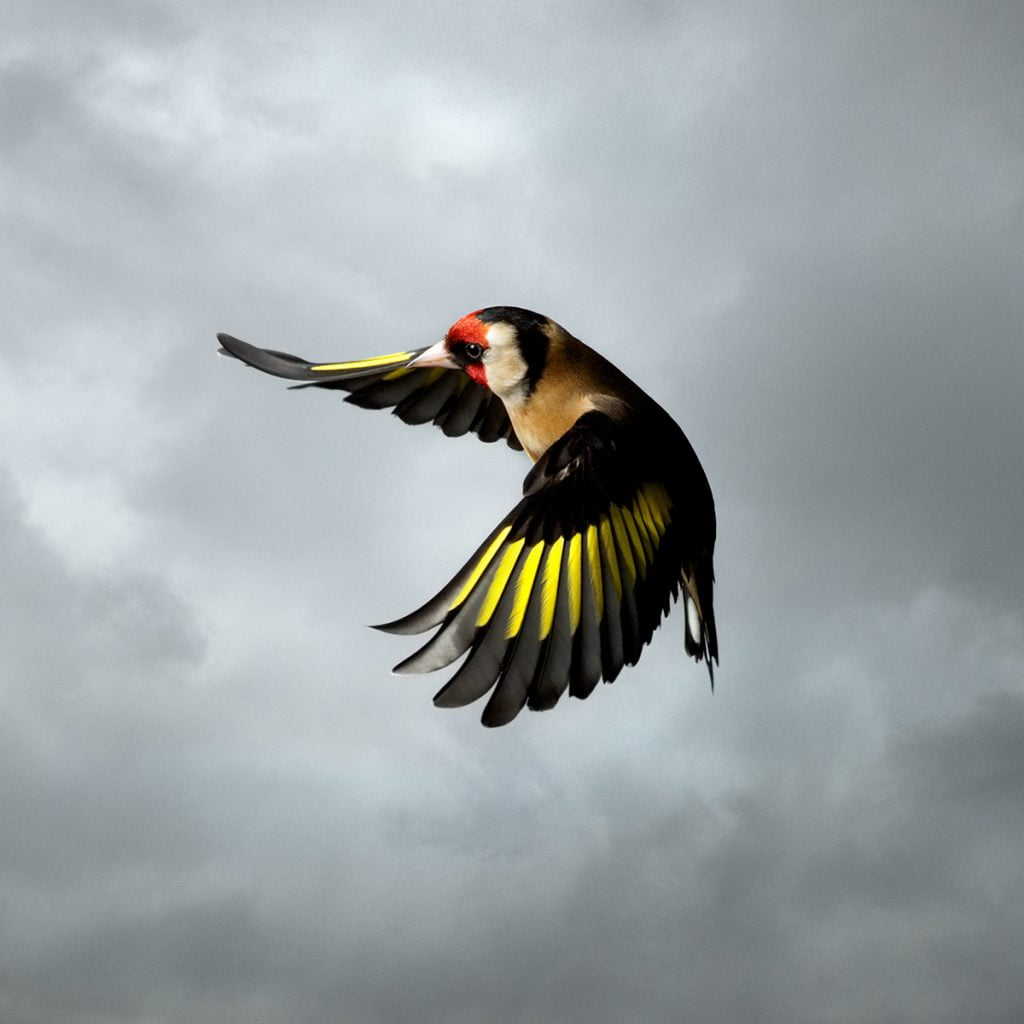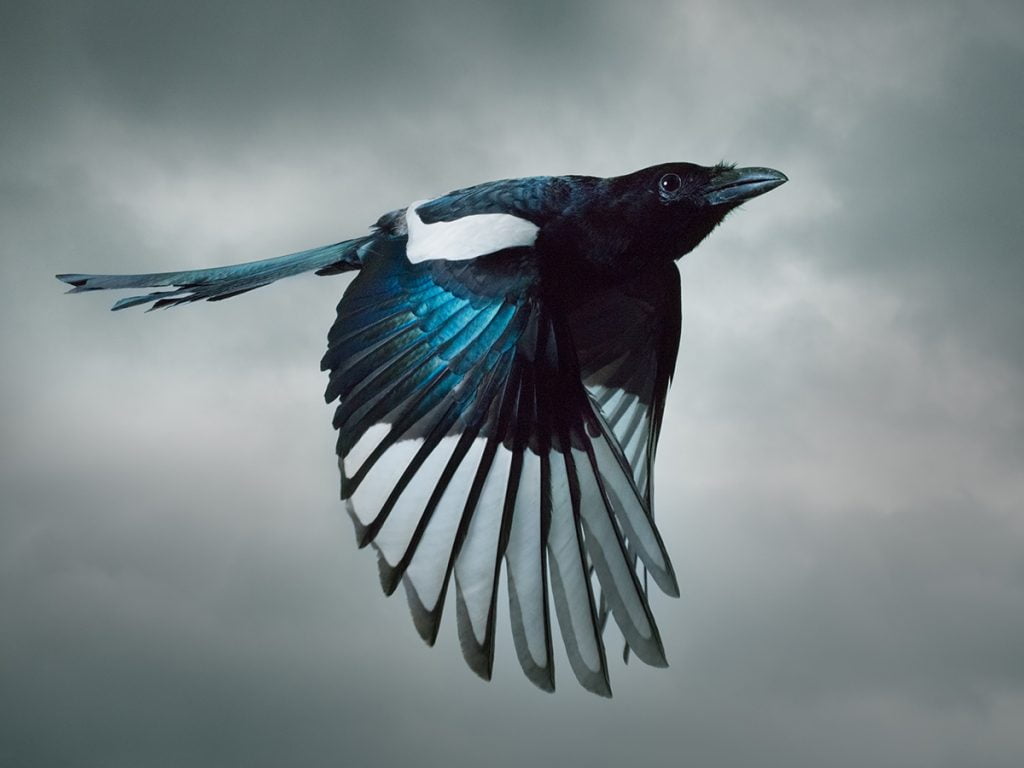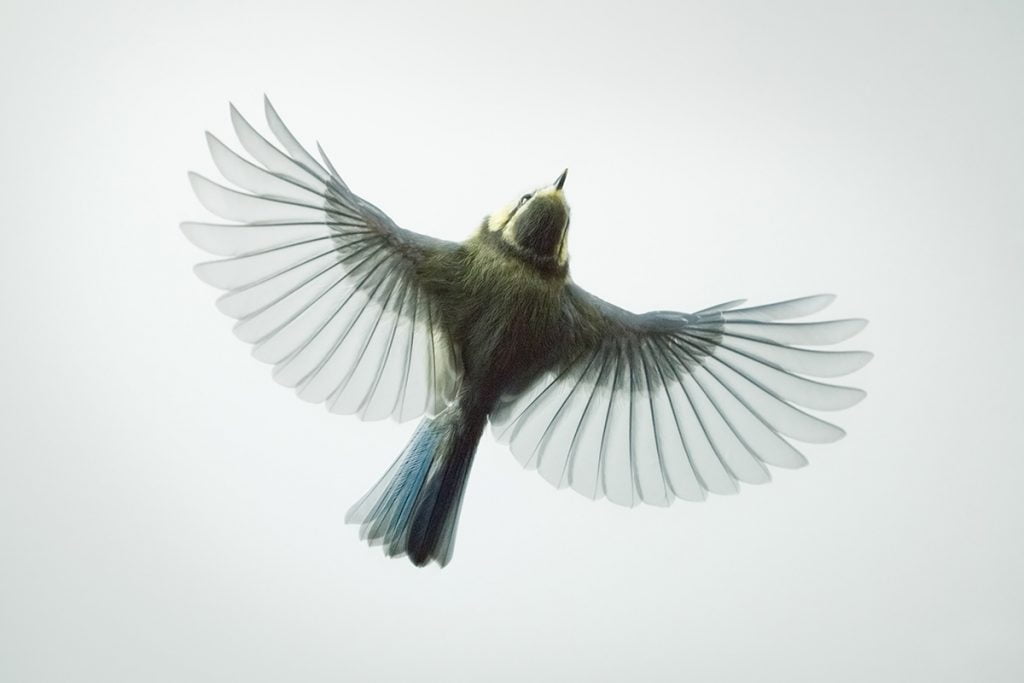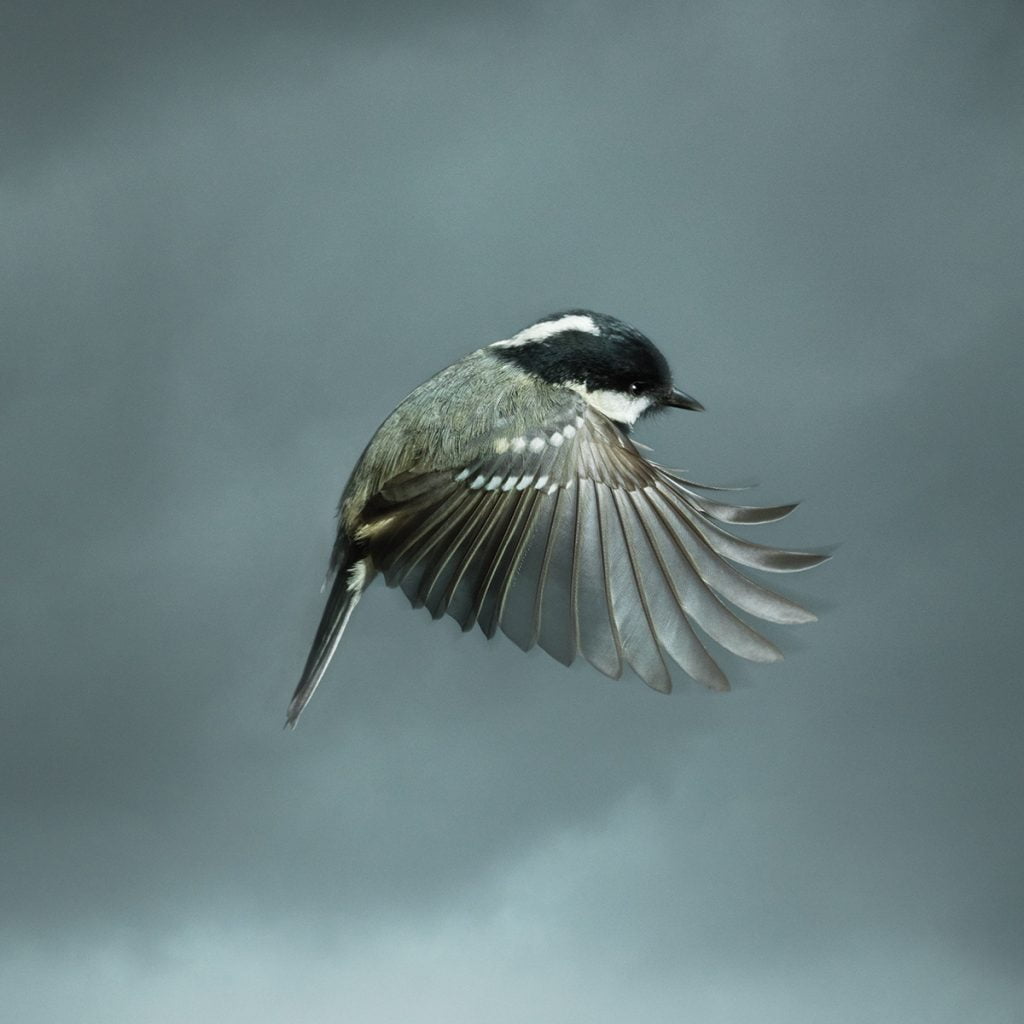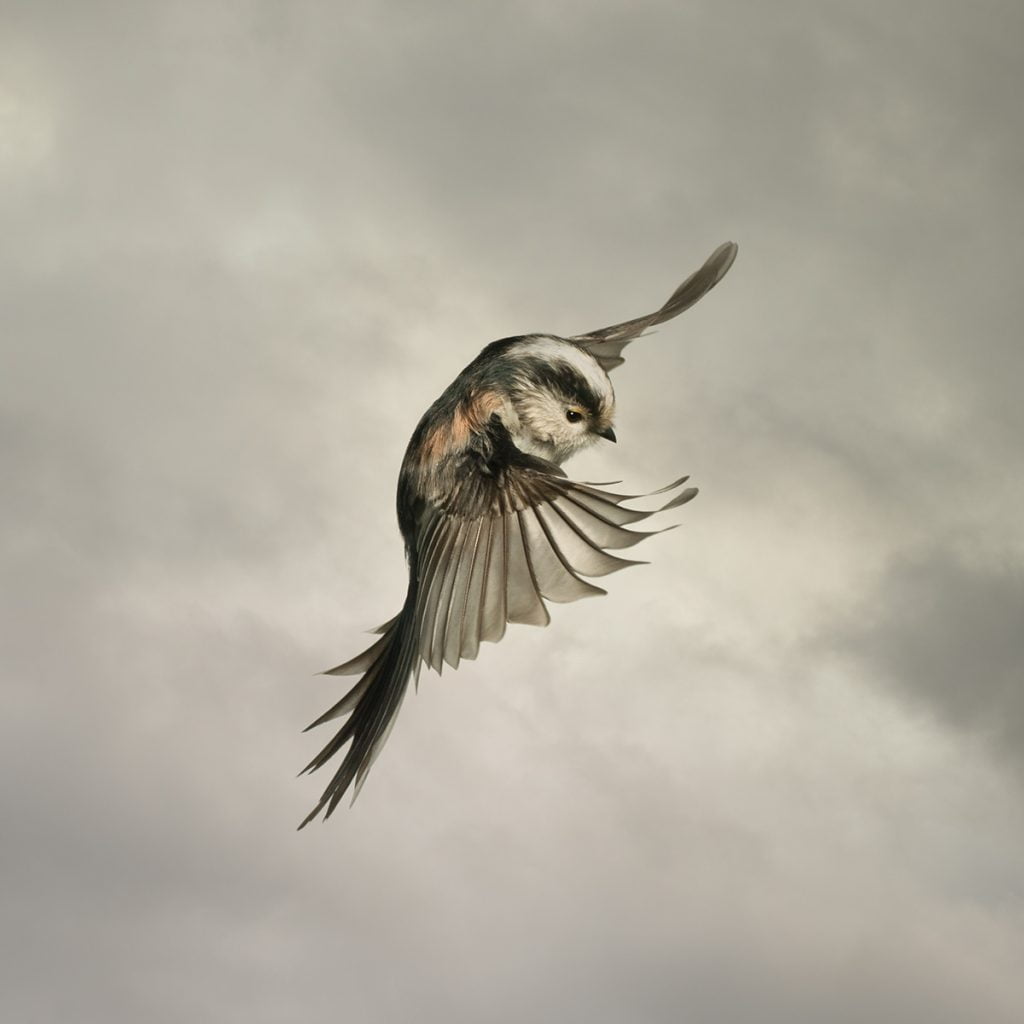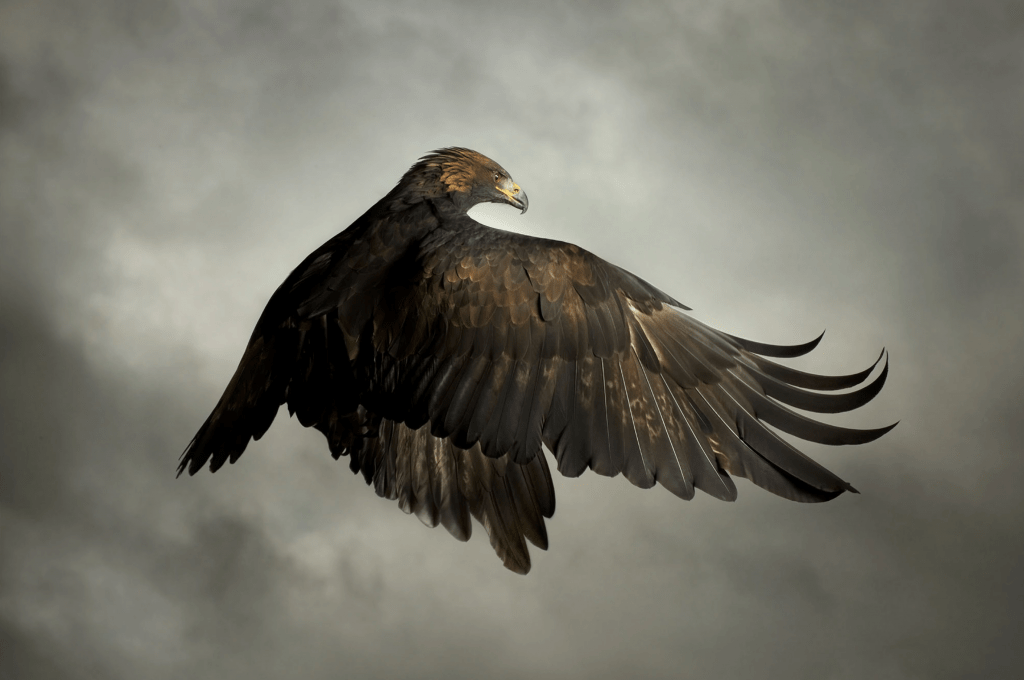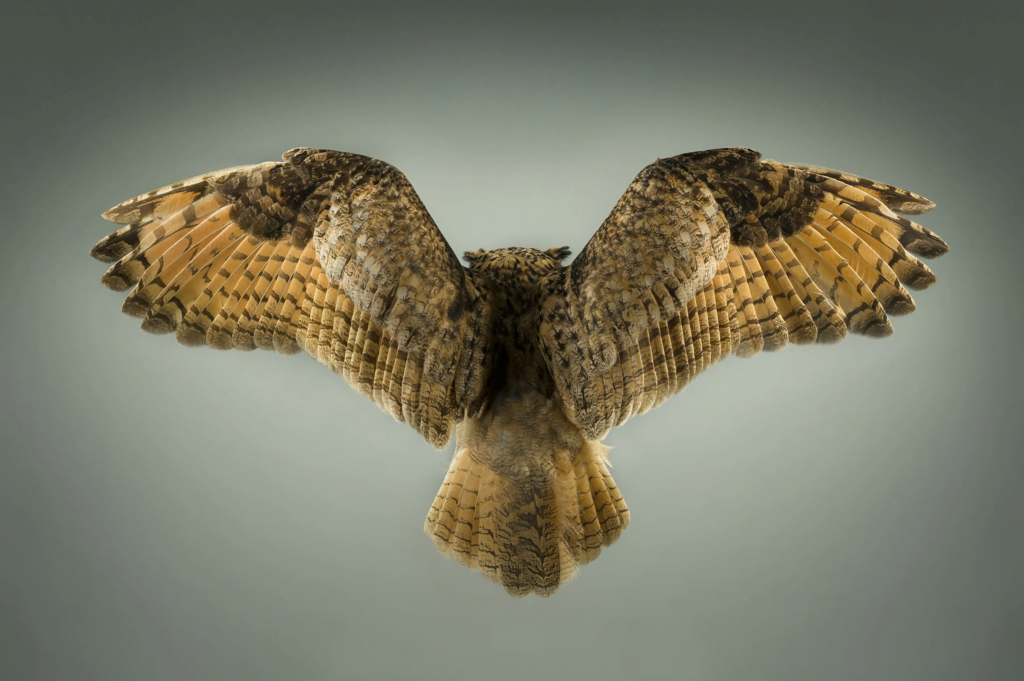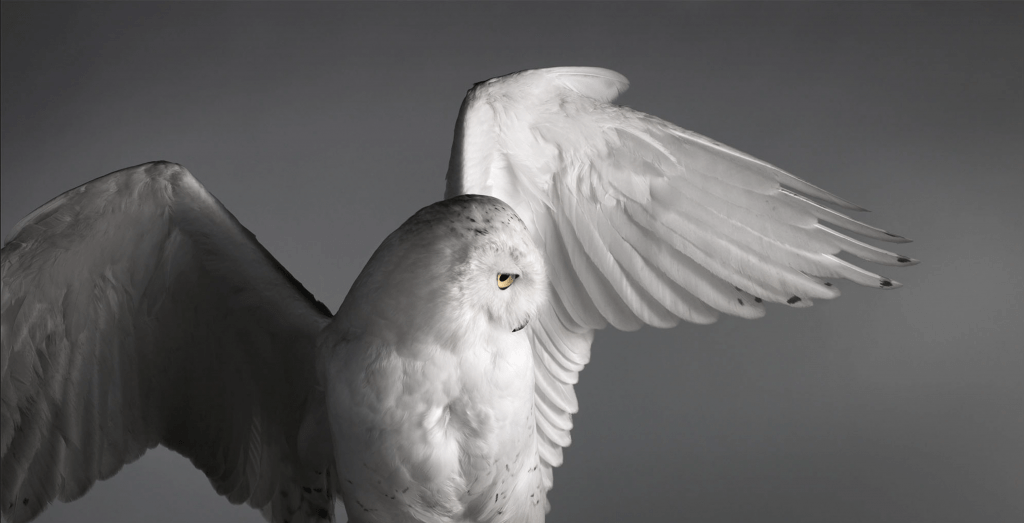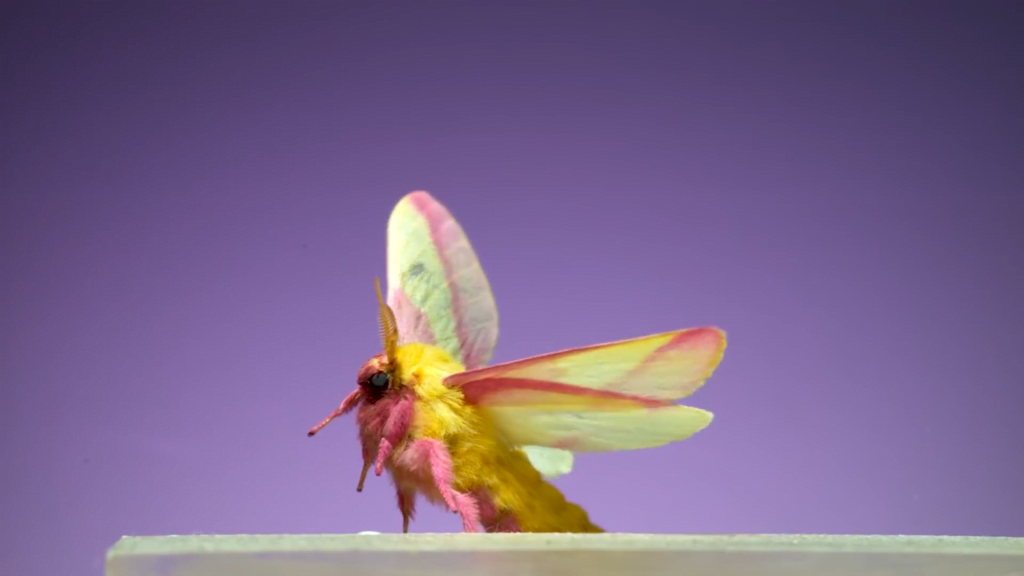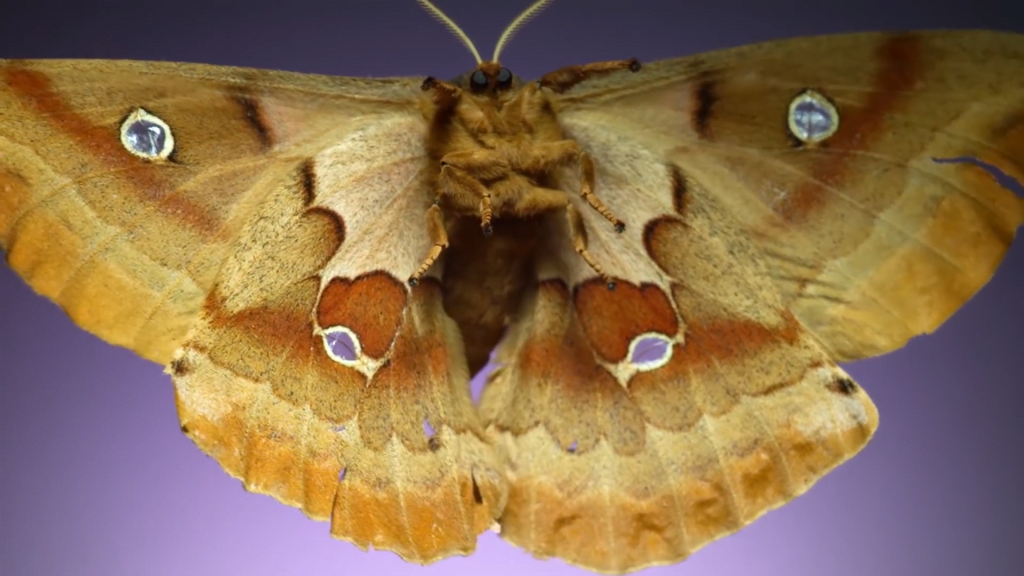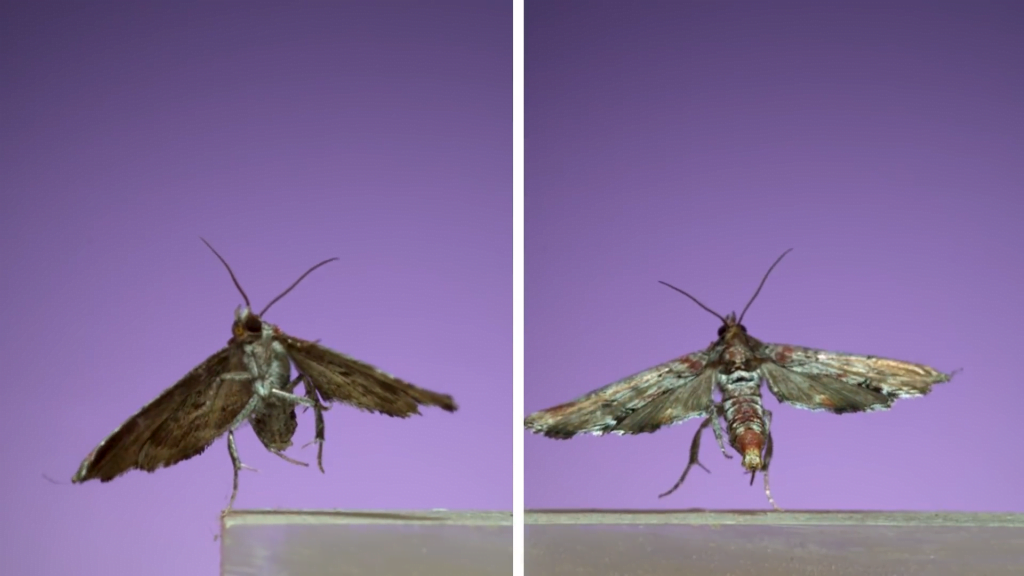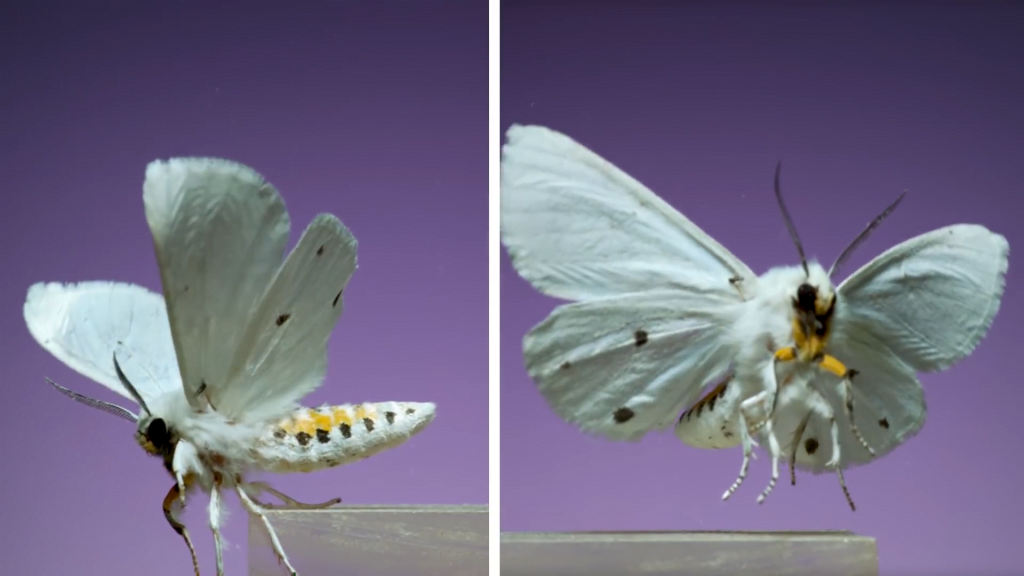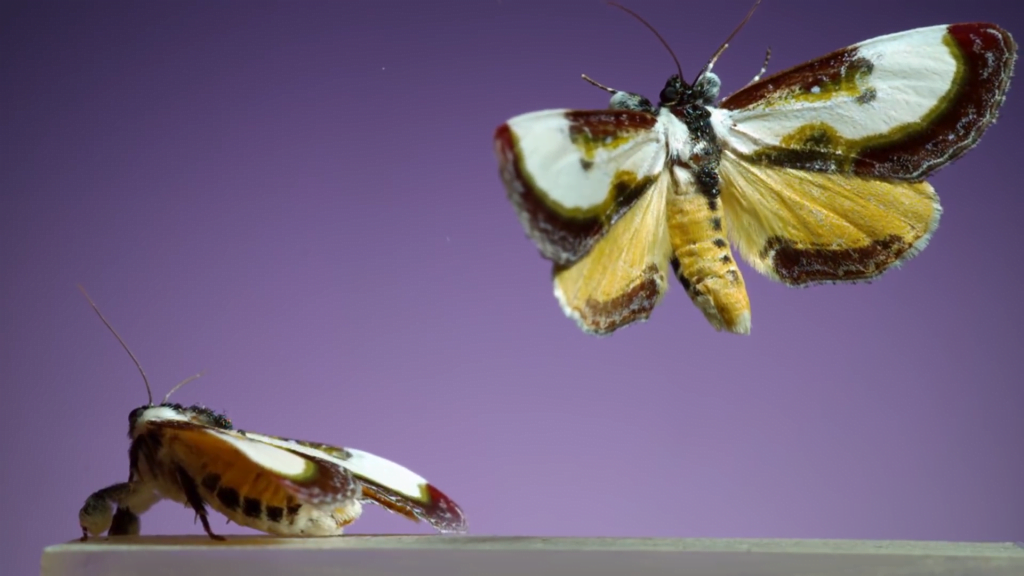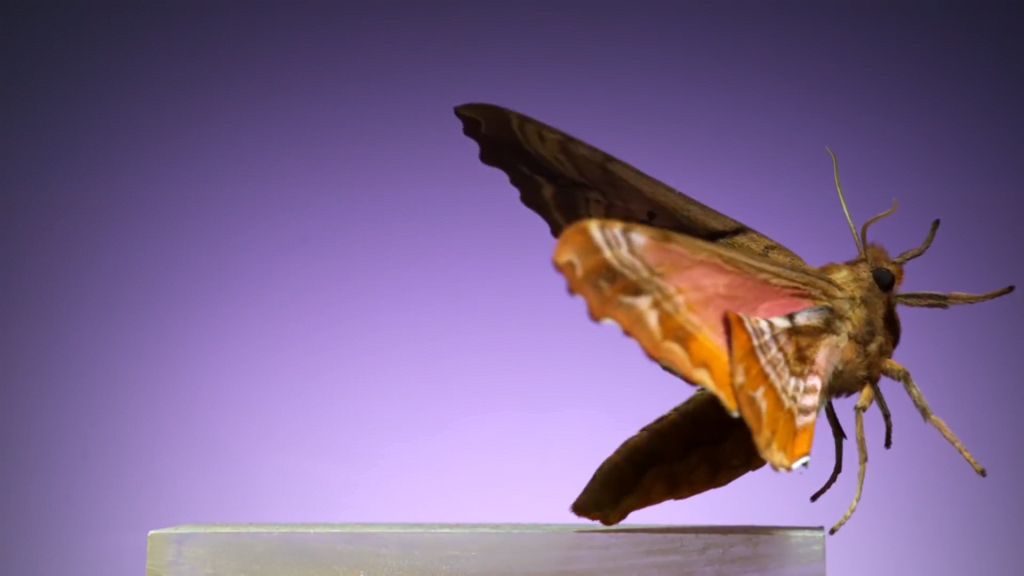Some people fly with geese to train them for wind tunnel tests, and some people fly with them to teach them safer migratory paths. Today’s video focuses on the latter, specifically conservationist Christian Moullec, who has spent decades living and flying with lesser white-fronted geese as part of an effort to save the threatened species. He flies with them using an ultralight aircraft, exercising daily to prepare for the cross-continental migration. To help fund the effort, he offers passengers a spot on his short flights, letting people fly with the birds! (Image and video credit: T. Scott; via Colossal)
Tag: flapping flight

Perching Aerodynamics
When birds come in for a landing, they pitch back and heave their wings as they come to a stop in a perching maneuver. Some birds, researchers noticed, partially fold their wings during the move, creating what’s known as a swept wing. Curious as to the effect of this sweep, the team recreated the wing motion of a perching bird using two flat plates — one rectangular and one swept — and measured the flow around them during the maneuver. They found that the swept wing had greater lift, thanks to a spanwise flow inherent to swept wings that helped stabilize the leading-edge vortex. (Image credit: D. George; research credit: D. Adhikari et al.; via APS Physics)

Featherwings in Flight
The featherwing beetle is tiny, less than half a millimeter in length. At that scale, flying is a challenge, with air’s viscosity dominating the forces the insect must overcome. The featherwing beetle, as its name suggests, has feather-like wings rather than the membranes larger beetles use. But a new study shows that these odd wings work surprisingly well.
The beetle’s bristled wings flap with an exaggerated figure-8 motion, with the wings clapping together in front of and behind the insect. The beetle expends less energy moving its feathery wings than it would if they were solid, and it moves its wing covers at the same time to counter each stroke and keep its body steady. (Image and research credit: S. Farisenkov et al.; video credit: Nature; submitted by Kam-Yung Soh)

Turbulence in Flight
Eagles and other birds spend much of their lives in the turbulence of our atmospheric boundary layer. Some of their interactions with turbulence — like using topographical effects to aid their flight — are well-known, but much remains uncertain. One team of researchers looked at a tagged golden eagle’s flight data, compared with known wind conditions, and looked for evidence of turbulence’s influence. To do this, they drew on years of research into how turbulence interacts with inertial particles — particles that are heavier than the surrounding fluid and thus unable to follow the flow exactly.
What they found is that turbulence seems to be baked into many aspects of the eagle’s flight. Even the basic accelerations of the eagle’s body during flight showed characteristics that match those of turbulent flows. The findings suggest that turbulence — rather than something to be avoided — is an integral part of flight for birds, an energy source they’ve learned to exploit. (Image credit: J. Wang; research credit: K. Laurent et al.; submission by G. Bewley)

Portraits of Flight
During lockdown, photographer Doris Mitsch turned her eyes to the sky and began capturing these mesmerizing composite images of animals in flight. Vultures, crows, starlings, gulls, and bats all feature in her series. Some images, like “Lockdown Vulture (Signature)”, feature a single bird’s movement over a minute. Others show entire flocks over extended periods.
I love how the images capture a sense of speed. Given equal timing between images, the lines with more space between each snapshot of a bird indicate a faster speed. It’s a bit like having particle image velociometry frames stacked atop one another! (Image credit: D. Mitsch; via Colossal)

Butterflies Emerging
When a butterfly emerges from its chrysalis, it flaps its wings to help pump fluids through its body, essentially inflating its new adult form. You get a glimpse of that process here in this Ant Lab video, along with some spectacular slow motion footage of butterflies taking off. I’m always amazed to see how much butterfly wings flex with each wing beat! Even more impressive is the strength of the insect’s lift; as seen here, a butterfly is strong enough to take off while supporting both itself and a mated insect. (Image and video credit: Ant Lab/A. Smith)

The Best of FYFD 2021
A year ago I observed what a strange year 2020 had been, and in many ways, I could say the same of 2021. Before the pandemic, I spent quite a lot of time traveling. In 2021, the only nights I slept outside my own bed came on a long weekend up to the mountains with my family. But 2021 also saw a bit of a return to normalcy – I was giving keynote addresses and workshops again, albeit virtually. What will 2022 hold? Who knows?!
As per tradition, here are the top FYFD posts of 2021:
- A superior mirage leaves a ship floating in mid-air
- Drone videos of sheep herding are mesmerizing
- Permeable pavement allows water to drain
- The slow and dreamy fluid landscape of “Le Temps et l’Espace”
- What do you do when you’re an insect researcher with a high-speed camera?
- Satellite images… or paint?
- The intricate lacework of the Venus’s flower basket sea sponge
- Building a Bluetooth speaker with ferrofluid music visualization
- Finding the acoustics of Stonehenge
- Making butter by traditional French methods
It’s an eclectic mix of topics this year: bizarre phenomena, stunning art, archaeological exploration, and a touch of biophysics!
If you enjoy FYFD, please remember that it’s primarily reader-supported. You can help support the site by becoming a patron, making a one-time donation, buying some merch, or simply by sharing on social media. And if you find yourself struggling to remember to check the website, remember you can get FYFD in your inbox every two weeks with our newsletter. Happy New Year!
(Image credits: mirage – D. Morris, sheep – L. Patel, pavement – Practical Engineering, Le Temps – T. Blanchard, insects – Ant Lab, Satellike – R. De Giuli, sea sponge – G. Falcucci et al., speaker – DAKD Jung, Stonehenge – T. Cox et al., butter – Art Insider)

“In Flight”
Photographer Mark Harvey captured these stunning portraits of birds in flight. From acrobatic songbirds to soaring raptors, the images show the incredible morphology of a bird’s wing during flight. Most birds are constantly changing their wing shape to generate lift, change trajectory, and stabilize their flight. Note the separation between the flight feathers in all of these birds. Those gaps are thought help break up the birds’ wingtip vortices, thereby reducing their induced drag. You may also notice that the owls in Harvey’s photos have feathers that look a bit different from the other birds; owls have adaptations in their feathers that help damp out turbulence, which makes them quieter in flight. Prints of Harvey’s images are available on his website. (Image credit: M. Harvey; via Colossal 1, 2)

Moths in Flight
As student engineers, we often use fixed-wing aircraft to build our intuition for flight, but nature has so many other incredible examples to offer. Here we see high-speed video of seven different moth species taking off, and understanding fixed-wing flight won’t help you here at all! These moths have small, rough, and incredibly flexible wings — all characteristics an aircraft designer typically avoids. Yet these insects are agile, fast, and capable fliers at a scale that continues to thwart engineers. Some of the earliest pioneers of flight watched birds for inspiration; for small crafts, there’s no better teacher than insects. (Image and video credit: A. Smith/AntLab)

Whiffling Geese
This wild photograph shows a goose flying upside down with its head turned 180 degrees in a behavior known as whiffling. In this orientation, the bird’s typical lift characteristics are reversed, but as you can see in the video below, this doesn’t exactly make them fall out of the sky. I suspect the geese compensate by changing their angle of attack (unless descending rapidly is their goal). There are numerous theories as to why the birds whiffle, including escaping hunters by using an erratic flight path or just showing off to the other geese. Maybe they’re just out to have a little fun! (Image credit: V. Cornelissen; video credit: Flightartists Project; via Colossal; submitted by jpshoer)


